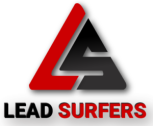Artificial Intelligence (AI) is increasingly playing a crucial role in wildlife conservation, offering innovative solutions for tracking and monitoring species in their natural habitats. Traditional methods of wildlife monitoring, often involving extensive fieldwork and manual data collection, are being complemented—and in some cases, replaced—by AI technologies that provide more efficient, accurate, and scalable solutions. This integration of AI is transforming conservation efforts by enhancing data collection, improving species tracking, and enabling more effective protection strategies.
One of the primary applications of AI in wildlife conservation is in the field of remote monitoring. AI-powered camera traps and drones equipped with advanced sensors and imaging technology can capture high-resolution images and videos of wildlife in various environments. These devices use computer vision algorithms to analyze the visual data, automatically identifying and classifying species based on their physical characteristics. For example, AI systems can differentiate between similar-looking animals, such as different species of birds or mammals, with high accuracy. This automated identification reduces the need for human intervention and allows for large-scale monitoring of wildlife populations without disturbing their natural behavior.
In addition to visual recognition, AI is also employed in acoustic monitoring. Many species of wildlife, including birds, amphibians, and marine animals, communicate through distinct vocalizations. AI-driven audio analysis tools can record and analyze these sounds, identifying species based on their calls or songs. By processing vast amounts of audio data, AI systems can track the presence and abundance of species over time, monitor changes in their vocal behavior, and detect signs of environmental stress or habitat degradation. This approach provides valuable insights into species distribution and health, aiding in the development of targeted conservation strategies.
AI is also enhancing the tracking of individual animals through the use of GPS and radio telemetry data. Machine learning algorithms analyze movement patterns, migration routes, and habitat use to understand the spatial behaviors of different species. This information is crucial for identifying critical habitats, assessing the impact of human activities, and planning effective conservation interventions. For example, AI can help track the migration patterns of endangered species, enabling conservationists to identify key areas for protection or restoration efforts.
Another innovative application of AI in wildlife conservation is the use of predictive analytics to forecast potential threats. By analyzing historical data on species populations, habitat conditions, and environmental factors, AI models can predict future trends and potential risks to wildlife. This predictive capability allows conservationists to proactively address threats such as habitat loss, climate change, or poaching. For instance, AI can forecast the impact of deforestation on a particular species, helping to prioritize conservation actions and mitigate adverse effects before they become critical.
AI is also being used to combat illegal wildlife trade and poaching through advanced monitoring systems. AI-powered image recognition tools can analyze data from wildlife trafficking databases, social media platforms, and online marketplaces to identify and track the trade of endangered species and their parts. These systems can detect patterns and anomalies that may indicate illegal activities, providing law enforcement agencies with actionable intelligence to target and dismantle trafficking networks.
The integration of AI in wildlife conservation extends to community engagement and education as well. AI-powered apps and platforms can provide citizens and volunteers with tools to contribute to conservation efforts, such as reporting wildlife sightings, participating in citizen science projects, or learning about local species. By harnessing the power of AI, these platforms can mobilize public support, raise awareness, and foster greater involvement in conservation initiatives.
Despite the many advantages of AI in wildlife conservation, there are challenges and ethical considerations to address. One concern is the potential for technology to inadvertently disrupt wildlife behavior or habitats. For example, the presence of camera traps or drones may cause stress or alter the natural activities of animals. It is essential for conservationists to use these technologies responsibly and in ways that minimize disturbance to wildlife.
Additionally, the reliance on AI and technology raises issues related to data privacy, security, and access. Ensuring that data collected through AI systems is used ethically and stored securely is crucial for maintaining trust and protecting sensitive information. Furthermore, the use of AI in conservation efforts requires a balance between technological solutions and traditional fieldwork, ensuring that human expertise and on-the-ground knowledge remain integral to conservation strategies.
From Our Editorial Team
Our Editorial team comprises of over 15 highly motivated bunch of individuals, who work tirelessly to get the most sought after curated content for our subscribers.


